Camera testing is one of the most important parts of filming. In order for our pop video to work we need to have the right people. And this is why it is important to camera test. As some people work on camera whereas others don’t. Many actors for years have had a ‘something’ on screen which is indescribable, they have a presence that can dominate an entire screen when put on camera. Actors such as James Dean, Marlon Brando, Charlie Chaplin, Clark Gable, Judy Garland, Audrey Hepburn, Marilyn Monroe or Grace Kelly. Or some modern day actors such as Jack Nicholson, Johnny Depp or Meryl Streep and Angelina Jolie all have great screen precence which is indescribable.
Friday, 22 October 2010
Tuesday, 19 October 2010
STORYBOARDING
STORYBOARDING
The storyboard is the plan that you will use to. If it works on paper that makes it a lot less expensive than to waste time on shooting on camera for hours if not day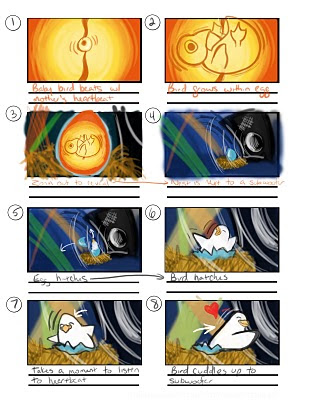 s. The storyboards works out the type of shots that we will use, the camera angles, the camera movements, mise en scene, the colours and shapes, and how the picture composition rules will be applied in the film.
s. The storyboards works out the type of shots that we will use, the camera angles, the camera movements, mise en scene, the colours and shapes, and how the picture composition rules will be applied in the film.
Our storyboarding really helped us to bring our music video together, it helped us to get a clear picture of what shots we needed where, the timing of them and it helped us to create strong visuals in our video. We were able to see the shots we wanted and work out the cuts that we wanted. We had to think about the angles and timings of each shot.
We have used lots of close ups in our storyboard in order to emphasise people and there instruments. As our song has some very slow bits and then some fast bits, we have used our storyboards to show the fast cutting bits from peoples faces to their instruments and we have decided to film bits of the song extremely fast to then be able to put it into slow motion in our editing yet still have her singing in time.
A tracking shot that we have storyboarded is a shot that begins with a close up of our lead singer’s mouth the camera then slowly tracks back to reveal her eyes and then the rest of her face. This camera movement helps the audience to feel involved and part of the shot, it gives them a sense of intimacy with the action that takes place.
We have used a lot of fast cutting shots in order to create action and excitement and to keep our audience intrigued throughout. We also have a ‘dance’ sequence which is based on a band called OKGO, this sequence will take a lot of editing as it will have a lot of slow-motion, fast cuts and movement. The band will jump from one are to the next using fast cutting.
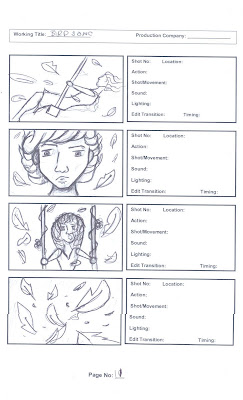
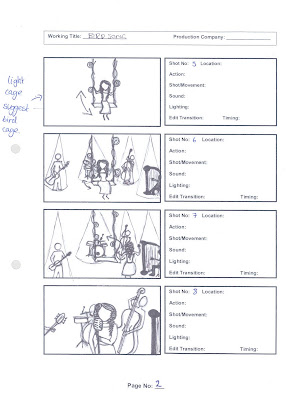
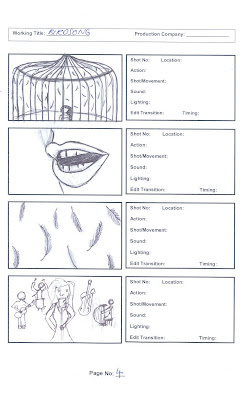
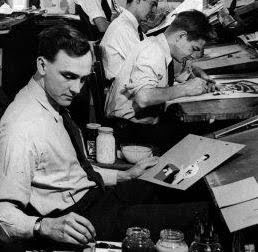 This is an image of a stroyboarder at work. Storyboarding takes time and percision. Artists have been storyboarding since the early 1930s and one of the first films to have been completly storyboarded was 'Gone With the Wind'. Storyboarding can become extreamly tediouse and takes a lot of time and effort. The image below on the right is an eight minuet animated cartoon strip. It has over 70 detailed images and probably took hours to draw and it is only worth 8 minuets of film.
This is an image of a stroyboarder at work. Storyboarding takes time and percision. Artists have been storyboarding since the early 1930s and one of the first films to have been completly storyboarded was 'Gone With the Wind'. Storyboarding can become extreamly tediouse and takes a lot of time and effort. The image below on the right is an eight minuet animated cartoon strip. It has over 70 detailed images and probably took hours to draw and it is only worth 8 minuets of film.
The storyboard is the plan that you will use to. If it works on paper that makes it a lot less expensive than to waste time on shooting on camera for hours if not day
 s. The storyboards works out the type of shots that we will use, the camera angles, the camera movements, mise en scene, the colours and shapes, and how the picture composition rules will be applied in the film.
s. The storyboards works out the type of shots that we will use, the camera angles, the camera movements, mise en scene, the colours and shapes, and how the picture composition rules will be applied in the film.Our storyboarding really helped us to bring our music video together, it helped us to get a clear picture of what shots we needed where, the timing of them and it helped us to create strong visuals in our video. We were able to see the shots we wanted and work out the cuts that we wanted. We had to think about the angles and timings of each shot.
We have used lots of close ups in our storyboard in order to emphasise people and there instruments. As our song has some very slow bits and then some fast bits, we have used our storyboards to show the fast cutting bits from peoples faces to their instruments and we have decided to film bits of the song extremely fast to then be able to put it into slow motion in our editing yet still have her singing in time.
A tracking shot that we have storyboarded is a shot that begins with a close up of our lead singer’s mouth the camera then slowly tracks back to reveal her eyes and then the rest of her face. This camera movement helps the audience to feel involved and part of the shot, it gives them a sense of intimacy with the action that takes place.
We have used a lot of fast cutting shots in order to create action and excitement and to keep our audience intrigued throughout. We also have a ‘dance’ sequence which is based on a band called OKGO, this sequence will take a lot of editing as it will have a lot of slow-motion, fast cuts and movement. The band will jump from one are to the next using fast cutting.



 This is an image of a stroyboarder at work. Storyboarding takes time and percision. Artists have been storyboarding since the early 1930s and one of the first films to have been completly storyboarded was 'Gone With the Wind'. Storyboarding can become extreamly tediouse and takes a lot of time and effort. The image below on the right is an eight minuet animated cartoon strip. It has over 70 detailed images and probably took hours to draw and it is only worth 8 minuets of film.
This is an image of a stroyboarder at work. Storyboarding takes time and percision. Artists have been storyboarding since the early 1930s and one of the first films to have been completly storyboarded was 'Gone With the Wind'. Storyboarding can become extreamly tediouse and takes a lot of time and effort. The image below on the right is an eight minuet animated cartoon strip. It has over 70 detailed images and probably took hours to draw and it is only worth 8 minuets of film.
I looked at this seminar by Steven Spielberg on how to storyboard and we have learnt and been influenced greatly by it for our storyboard.
http://www.youtube.com/watch?v=nBH89Y0Xj7c&feature=related
TIMELINE
TIMELINE
A time line i s used for creating a first try at putting the lyrics of the song to
s used for creating a first try at putting the lyrics of the song to gether with the music and times in the song. This helps us to see what will work and what wont. We are able to get a ruff outline of our shots before we begin storyboarding.
gether with the music and times in the song. This helps us to see what will work and what wont. We are able to get a ruff outline of our shots before we begin storyboarding.
An example of what did not work when we created our timeline was the length of some of our shots, our timeline helped us to realise that some of our shots were too long and that they needed to be quick, short and fast cutting in order to create pace and excitement in our video.
A different example of what really worked when we used our time line was our tracking shots, as these depend on our timing of the shots. We needed to be able to know how long to stay in a tight shot for in order to track out with the right timing and to then cut on to another shot.
We then began to build on our timeline by creating our storyboards.These helped us to have a clearer understanding of what types of shots we wanted and how it would all work and come together.
A time line i
 s used for creating a first try at putting the lyrics of the song to
s used for creating a first try at putting the lyrics of the song to gether with the music and times in the song. This helps us to see what will work and what wont. We are able to get a ruff outline of our shots before we begin storyboarding.
gether with the music and times in the song. This helps us to see what will work and what wont. We are able to get a ruff outline of our shots before we begin storyboarding.An example of what did not work when we created our timeline was the length of some of our shots, our timeline helped us to realise that some of our shots were too long and that they needed to be quick, short and fast cutting in order to create pace and excitement in our video.
A different example of what really worked when we used our time line was our tracking shots, as these depend on our timing of the shots. We needed to be able to know how long to stay in a tight shot for in order to track out with the right timing and to then cut on to another shot.
We then began to build on our timeline by creating our storyboards.These helped us to have a clearer understanding of what types of shots we wanted and how it would all work and come together.
Tuesday, 5 October 2010
COMPOSITION RULES - FILM MAKING
Composition rules can be applied to all art forms in life as they are what make up an effective images or series of moving images such as film shots. There are over a hundred different rules of composition for film making and people spend years studying them and their effects on film. Here are the most well known and necessary ones:
Different types of Shot Size
-Close Ups, are used very often in film as they allow the audience to feel intermit wi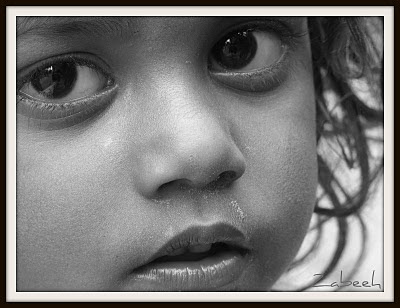 th the actors and feel involved with the scene. Close ups are used to portray emotion and detail. In music videos close ups can be used to put an emphasis on different things such as the hands playing an instrument or the eyes of the lead singer.
th the actors and feel involved with the scene. Close ups are used to portray emotion and detail. In music videos close ups can be used to put an emphasis on different things such as the hands playing an instrument or the eyes of the lead singer.
- Mid Shots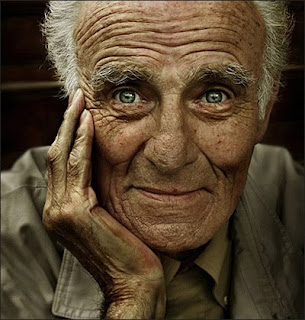 are used when the camera wants to be close to the subject but not so close that you are unable to distinguish what is in the shot. A mid shot may be used to film the face and head to portray expression.
are used when the camera wants to be close to the subject but not so close that you are unable to distinguish what is in the shot. A mid shot may be used to film the face and head to portray expression. 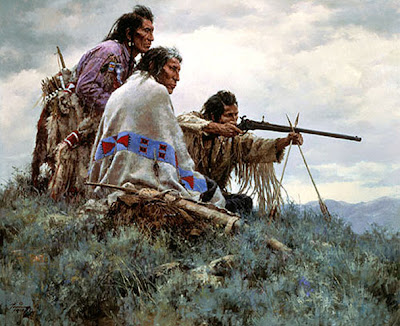
- Long Shots are used often when there is a lot of action going on, this shot enables the audience to see what is going on, if there was a fight taking place the audience would be close enough top be involved but further away enough to see the whole scene play out.
- Extreme Long Shots or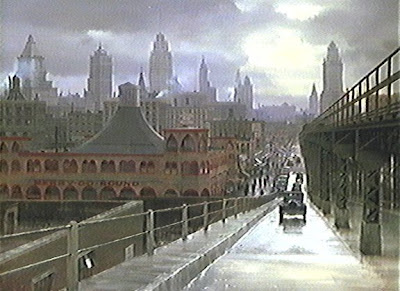 Establishing shots are used to set a time or place and to establish where a scene is, they will often give the audience a view of the surroundings to enable to show them where they are.
Establishing shots are used to set a time or place and to establish where a scene is, they will often give the audience a view of the surroundings to enable to show them where they are.
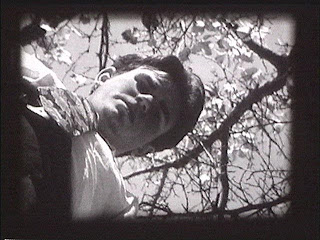
Camera Position and Angle
- Low angled shots can say a lot about a character. Shots like this let the audience know that this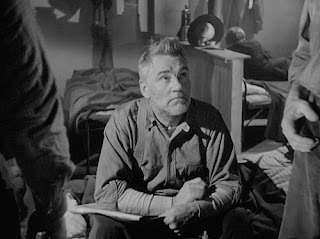 character has a higher status and that they are possibly arrogant, powerful or a ‘hero’.
character has a higher status and that they are possibly arrogant, powerful or a ‘hero’.
- High angled shots make the subject or person look inferior as we as an audience are looking down on them, it makes them seem powerless and weak.
- Flat on angled camera can make the subject look boring as there is no depth of field or shadows to the person.
Camera Movement
- Tracking shots are used all the time throughout filming, it tells the audience subco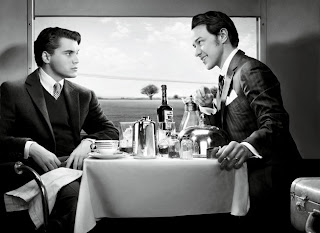 nsciously more than we realise about a character. Tracking shots that move from left to right can often let the audience know that the person who is being filmed is good, as it is natural for our eyes to read from left to right where as a tracking shot that moves from right to left can tell us that that person is bad as they have entered from the right side of the screen which is not the natural direction that our eyes look from.
nsciously more than we realise about a character. Tracking shots that move from left to right can often let the audience know that the person who is being filmed is good, as it is natural for our eyes to read from left to right where as a tracking shot that moves from right to left can tell us that that person is bad as they have entered from the right side of the screen which is not the natural direction that our eyes look from.
- Crane shots are used regularly throughout filming as they allow the audience to get a sense of space and movement in the camera. Crane shots can often be used when a camera swoops over a certain area and then moves in on the character. Crane shots can also be used as establishing shots or to create angled shots.
Lighting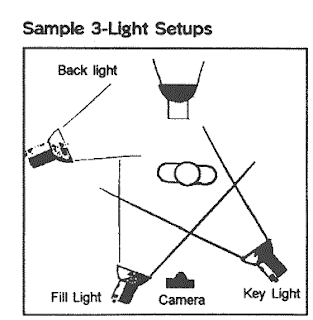
- Lighting is used to create effects or set a theme or mood in filming. It also tells us a lot about a character in a film, for example dark lighting with shadows may suggest mysterious and bad where as lots of backlighting as well as spot lighting can create a halo effect on a character and give them a very angelic look. It can completely change an emotion or a time of day in filming. There are a few essential lights that will almost always be used in filming which are a spot light, fill light and back light. These are essential at times as they enable the audience to see what is happening and who the characters are.
Different types of Shot Size
-Close Ups, are used very often in film as they allow the audience to feel intermit wi
 th the actors and feel involved with the scene. Close ups are used to portray emotion and detail. In music videos close ups can be used to put an emphasis on different things such as the hands playing an instrument or the eyes of the lead singer.
th the actors and feel involved with the scene. Close ups are used to portray emotion and detail. In music videos close ups can be used to put an emphasis on different things such as the hands playing an instrument or the eyes of the lead singer.- Mid Shots
 are used when the camera wants to be close to the subject but not so close that you are unable to distinguish what is in the shot. A mid shot may be used to film the face and head to portray expression.
are used when the camera wants to be close to the subject but not so close that you are unable to distinguish what is in the shot. A mid shot may be used to film the face and head to portray expression. 
- Long Shots are used often when there is a lot of action going on, this shot enables the audience to see what is going on, if there was a fight taking place the audience would be close enough top be involved but further away enough to see the whole scene play out.
- Extreme Long Shots or
 Establishing shots are used to set a time or place and to establish where a scene is, they will often give the audience a view of the surroundings to enable to show them where they are.
Establishing shots are used to set a time or place and to establish where a scene is, they will often give the audience a view of the surroundings to enable to show them where they are.
Camera Position and Angle
- Low angled shots can say a lot about a character. Shots like this let the audience know that this
 character has a higher status and that they are possibly arrogant, powerful or a ‘hero’.
character has a higher status and that they are possibly arrogant, powerful or a ‘hero’.- High angled shots make the subject or person look inferior as we as an audience are looking down on them, it makes them seem powerless and weak.
- Flat on angled camera can make the subject look boring as there is no depth of field or shadows to the person.
Camera Movement
- Tracking shots are used all the time throughout filming, it tells the audience subco
 nsciously more than we realise about a character. Tracking shots that move from left to right can often let the audience know that the person who is being filmed is good, as it is natural for our eyes to read from left to right where as a tracking shot that moves from right to left can tell us that that person is bad as they have entered from the right side of the screen which is not the natural direction that our eyes look from.
nsciously more than we realise about a character. Tracking shots that move from left to right can often let the audience know that the person who is being filmed is good, as it is natural for our eyes to read from left to right where as a tracking shot that moves from right to left can tell us that that person is bad as they have entered from the right side of the screen which is not the natural direction that our eyes look from.- Crane shots are used regularly throughout filming as they allow the audience to get a sense of space and movement in the camera. Crane shots can often be used when a camera swoops over a certain area and then moves in on the character. Crane shots can also be used as establishing shots or to create angled shots.
Lighting

- Lighting is used to create effects or set a theme or mood in filming. It also tells us a lot about a character in a film, for example dark lighting with shadows may suggest mysterious and bad where as lots of backlighting as well as spot lighting can create a halo effect on a character and give them a very angelic look. It can completely change an emotion or a time of day in filming. There are a few essential lights that will almost always be used in filming which are a spot light, fill light and back light. These are essential at times as they enable the audience to see what is happening and who the characters are.
Rule of Thirds
- - The rule of thirds can be applied to all forms of art, it is when an image or shot is br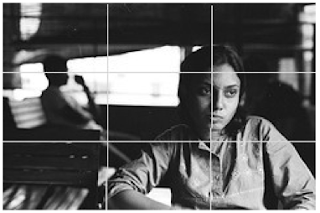 oken up into 9 parts in thirds with certain ‘hot spots’ that lead the eye around the image or shot. People may be placed on these hot spots to draw attention to them, a shot is set up so that the eye reads across the rule of thirds. If the rule is broken and a person or object is placed off one of the hot spots it will most likely be for a reason, our eye is naturally drawn to one of the hot spots so when something is placed off of one of the hot spots the audience subconsciously makes a decision about that character or person letting us know that they are rebellious, quirky or bad.
oken up into 9 parts in thirds with certain ‘hot spots’ that lead the eye around the image or shot. People may be placed on these hot spots to draw attention to them, a shot is set up so that the eye reads across the rule of thirds. If the rule is broken and a person or object is placed off one of the hot spots it will most likely be for a reason, our eye is naturally drawn to one of the hot spots so when something is placed off of one of the hot spots the audience subconsciously makes a decision about that character or person letting us know that they are rebellious, quirky or bad.
Colours
- Colours say a lot m ore about a person or a set than people realise. Even the colours of lighting play a huge part in setting an atmosphere or a mood for something. Clothing can let an audience know a lot about a certain character for example the classic white clothing for good and black for evil. Yet other colours say so much more. If you wanted to portray an image of an energetic and exciting band you may dress them in reds, yellows or oranges as these colours are alert minded, outgoing, physical, active, creative, sociable with sunny or bright ideas, but if you wanted to create a band which has calming influences and is more relaxed you may use blues, purples, browns and turquoises to give off a more peaceful atmosphere with softer influences.
ore about a person or a set than people realise. Even the colours of lighting play a huge part in setting an atmosphere or a mood for something. Clothing can let an audience know a lot about a certain character for example the classic white clothing for good and black for evil. Yet other colours say so much more. If you wanted to portray an image of an energetic and exciting band you may dress them in reds, yellows or oranges as these colours are alert minded, outgoing, physical, active, creative, sociable with sunny or bright ideas, but if you wanted to create a band which has calming influences and is more relaxed you may use blues, purples, browns and turquoises to give off a more peaceful atmosphere with softer influences.
Shapes and Lines
- Shapes and lines are another thing that can say a lot about your band or the char acters in your scene as they create a mood, horizontal lines are more relaxed lines where as vertical lines a harsher and more direct, diagonal lines can be used to create an atmosphere of action and movement. So if you add all of the rules and elements together such as the colours, lighting, lines and camera angles and movements you can tell the audience so much about a person or a group without saying anything.
acters in your scene as they create a mood, horizontal lines are more relaxed lines where as vertical lines a harsher and more direct, diagonal lines can be used to create an atmosphere of action and movement. So if you add all of the rules and elements together such as the colours, lighting, lines and camera angles and movements you can tell the audience so much about a person or a group without saying anything.
 oken up into 9 parts in thirds with certain ‘hot spots’ that lead the eye around the image or shot. People may be placed on these hot spots to draw attention to them, a shot is set up so that the eye reads across the rule of thirds. If the rule is broken and a person or object is placed off one of the hot spots it will most likely be for a reason, our eye is naturally drawn to one of the hot spots so when something is placed off of one of the hot spots the audience subconsciously makes a decision about that character or person letting us know that they are rebellious, quirky or bad.
oken up into 9 parts in thirds with certain ‘hot spots’ that lead the eye around the image or shot. People may be placed on these hot spots to draw attention to them, a shot is set up so that the eye reads across the rule of thirds. If the rule is broken and a person or object is placed off one of the hot spots it will most likely be for a reason, our eye is naturally drawn to one of the hot spots so when something is placed off of one of the hot spots the audience subconsciously makes a decision about that character or person letting us know that they are rebellious, quirky or bad.Colours
- Colours say a lot m
 ore about a person or a set than people realise. Even the colours of lighting play a huge part in setting an atmosphere or a mood for something. Clothing can let an audience know a lot about a certain character for example the classic white clothing for good and black for evil. Yet other colours say so much more. If you wanted to portray an image of an energetic and exciting band you may dress them in reds, yellows or oranges as these colours are alert minded, outgoing, physical, active, creative, sociable with sunny or bright ideas, but if you wanted to create a band which has calming influences and is more relaxed you may use blues, purples, browns and turquoises to give off a more peaceful atmosphere with softer influences.
ore about a person or a set than people realise. Even the colours of lighting play a huge part in setting an atmosphere or a mood for something. Clothing can let an audience know a lot about a certain character for example the classic white clothing for good and black for evil. Yet other colours say so much more. If you wanted to portray an image of an energetic and exciting band you may dress them in reds, yellows or oranges as these colours are alert minded, outgoing, physical, active, creative, sociable with sunny or bright ideas, but if you wanted to create a band which has calming influences and is more relaxed you may use blues, purples, browns and turquoises to give off a more peaceful atmosphere with softer influences.Shapes and Lines
- Shapes and lines are another thing that can say a lot about your band or the char
 acters in your scene as they create a mood, horizontal lines are more relaxed lines where as vertical lines a harsher and more direct, diagonal lines can be used to create an atmosphere of action and movement. So if you add all of the rules and elements together such as the colours, lighting, lines and camera angles and movements you can tell the audience so much about a person or a group without saying anything.
acters in your scene as they create a mood, horizontal lines are more relaxed lines where as vertical lines a harsher and more direct, diagonal lines can be used to create an atmosphere of action and movement. So if you add all of the rules and elements together such as the colours, lighting, lines and camera angles and movements you can tell the audience so much about a person or a group without saying anything.FIRST PITCH
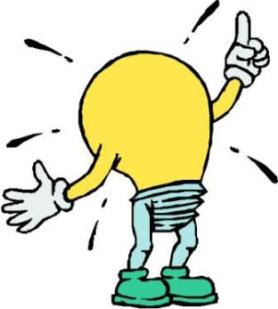
Our first pitch to Luke, a media teacher went well. We arrived with a lot of ideas that were not all set in stone. Each of them had extremely drastic and un naturalistic ideas about them. So Luke helped us to come to our final decision, which was when we decided to do Bird Song by Florence and the machine. We told him that we wanted to surround the video around the idea of having a façade in everything. The idea is about a young girl who lives in the perfect suburban neighbourhood, whose life seems perfect and one day as she is outside she begins to hear a bird singing about what she has done and so she takes it into her house to kill it. When we see the inside of what we thought was a perfect house we see and old, run down, destroyed, dirty, grimy house that she lives in. echoing the idea that things are not what they seem. Luke wanted us to improve on the narrative of the video and to also add to the performance because at some time we needed to add the band into the video with the lead singer who also plays the lead in the video.
Subscribe to:
Posts (Atom)